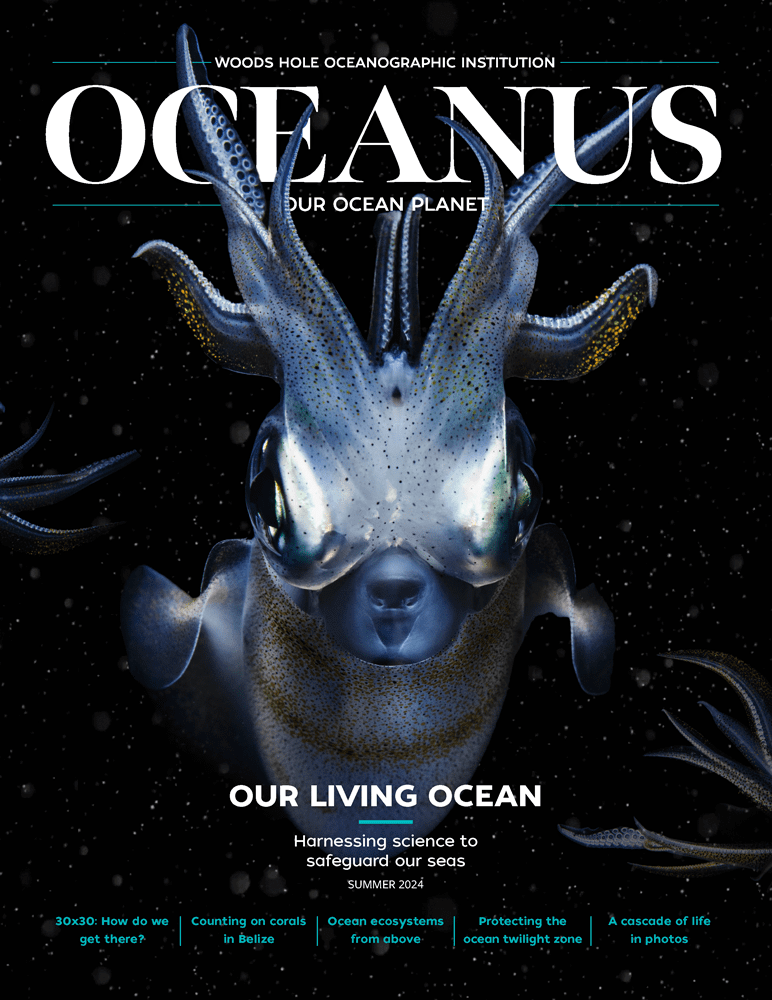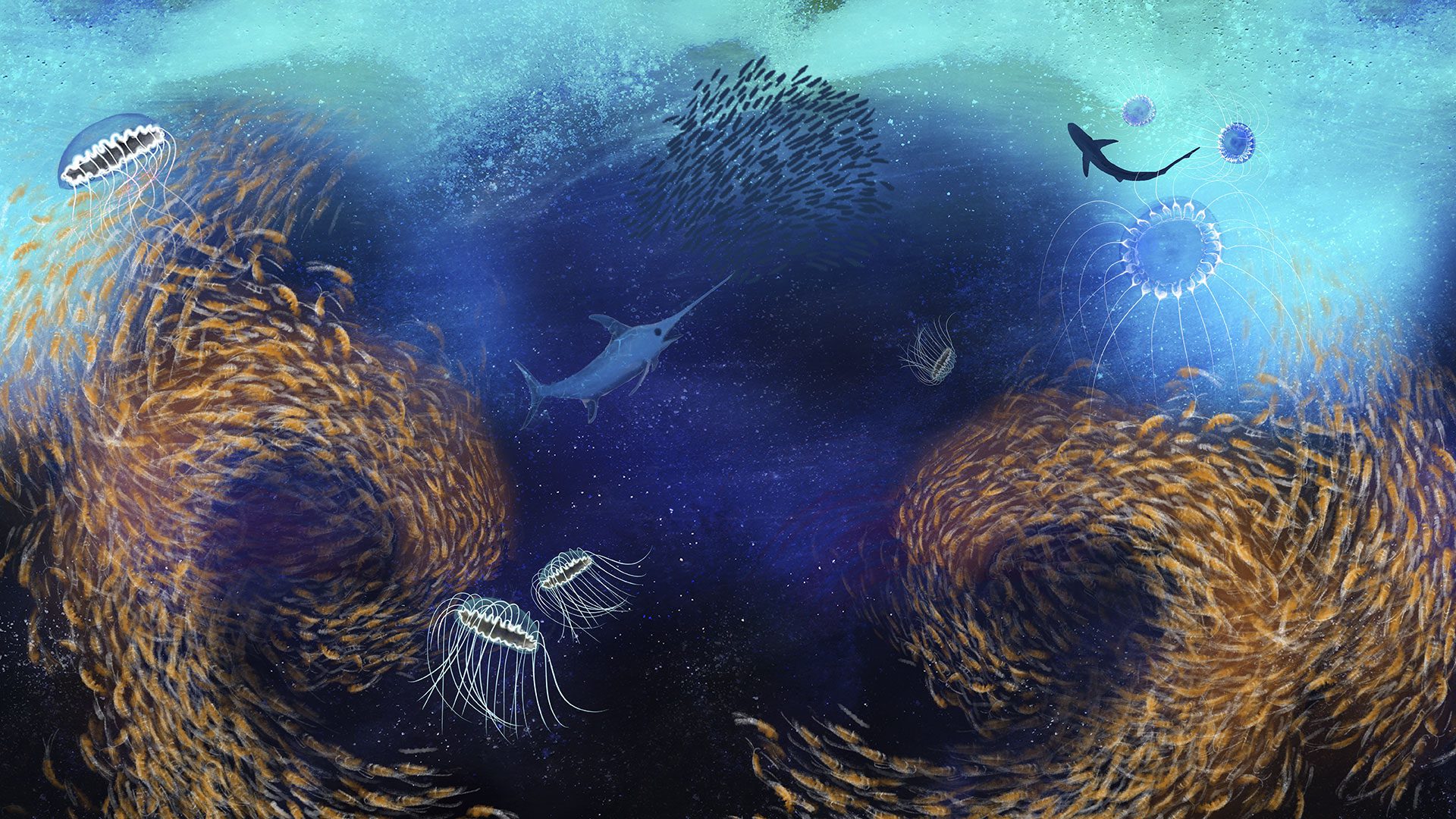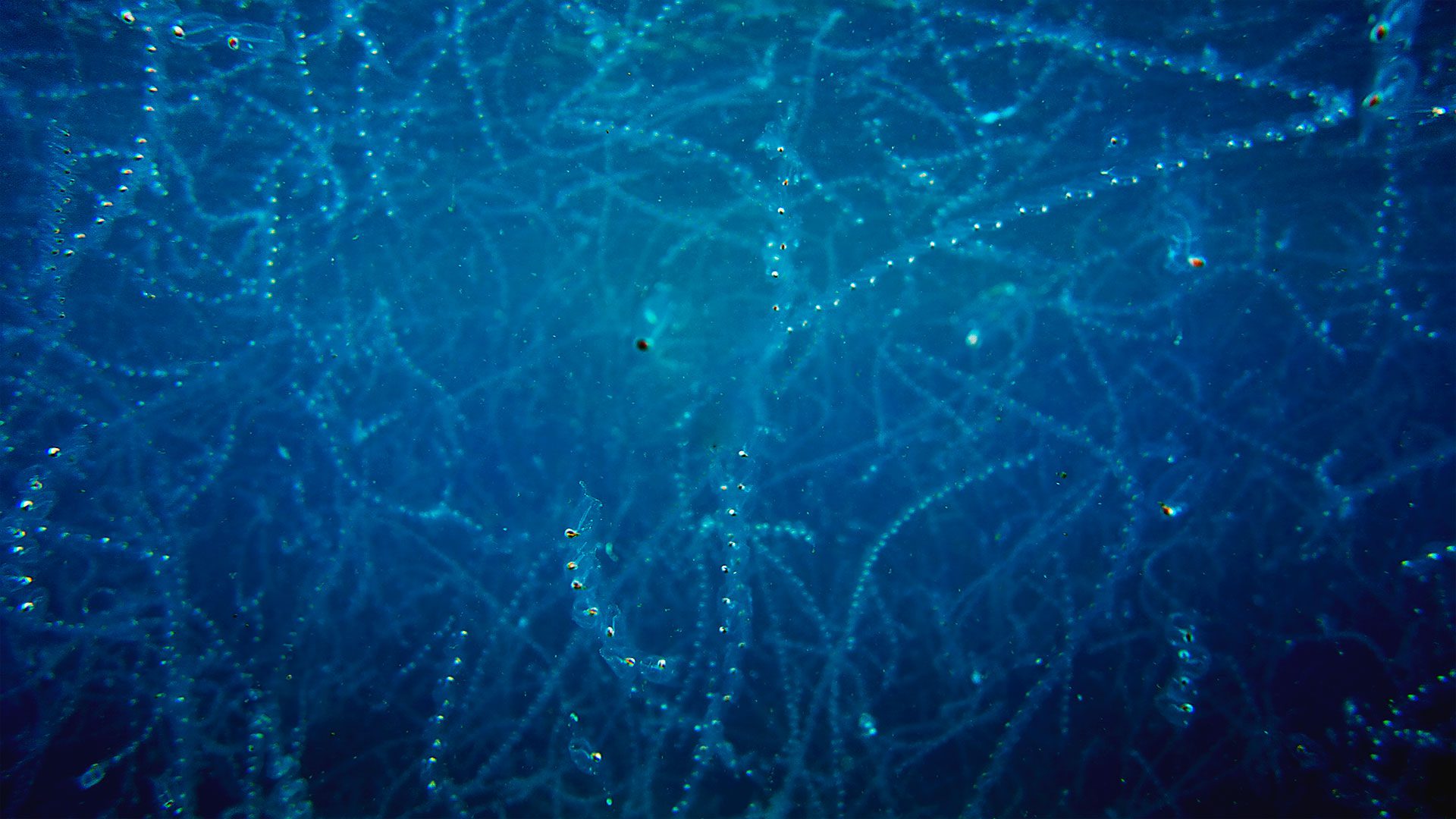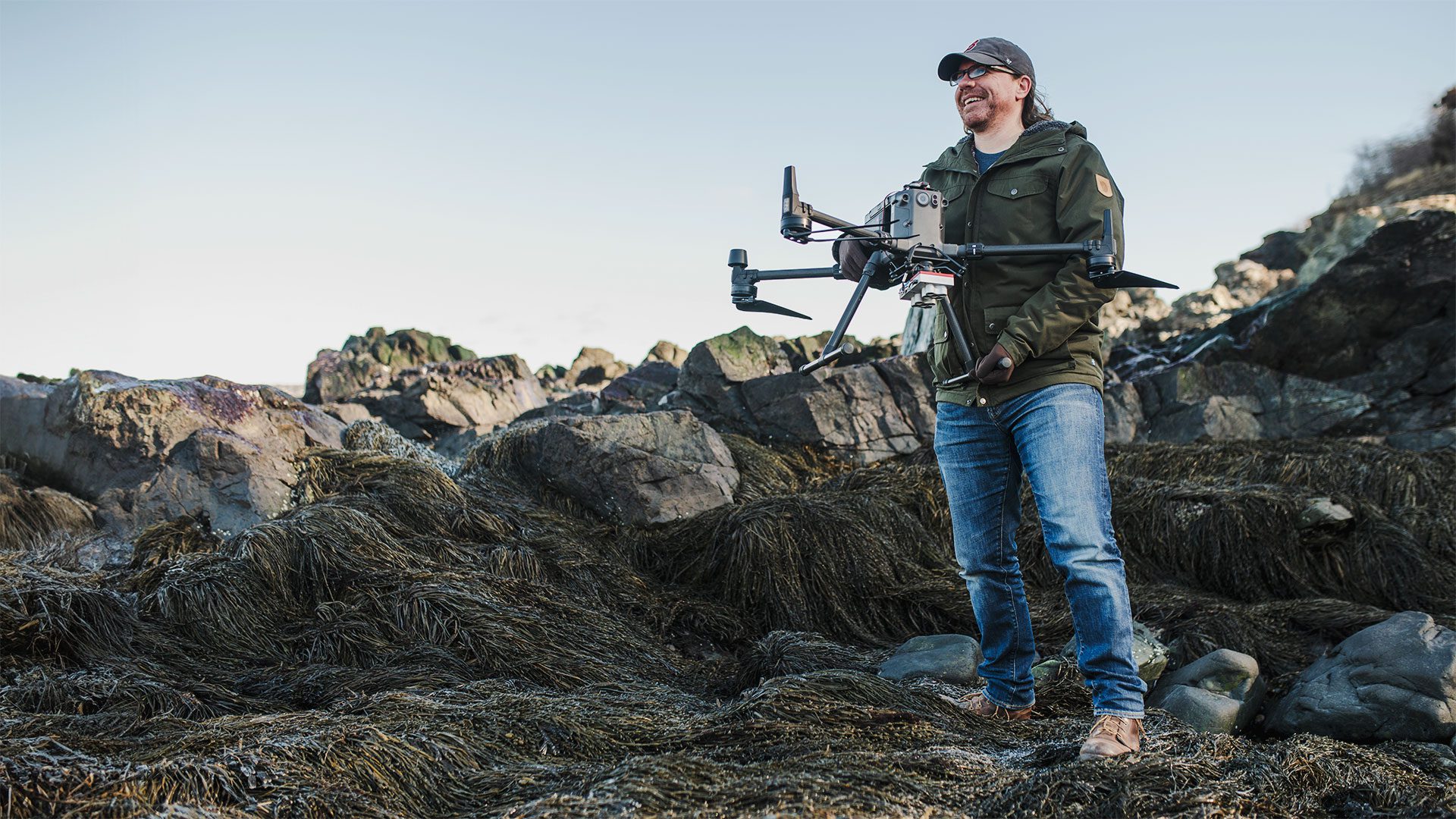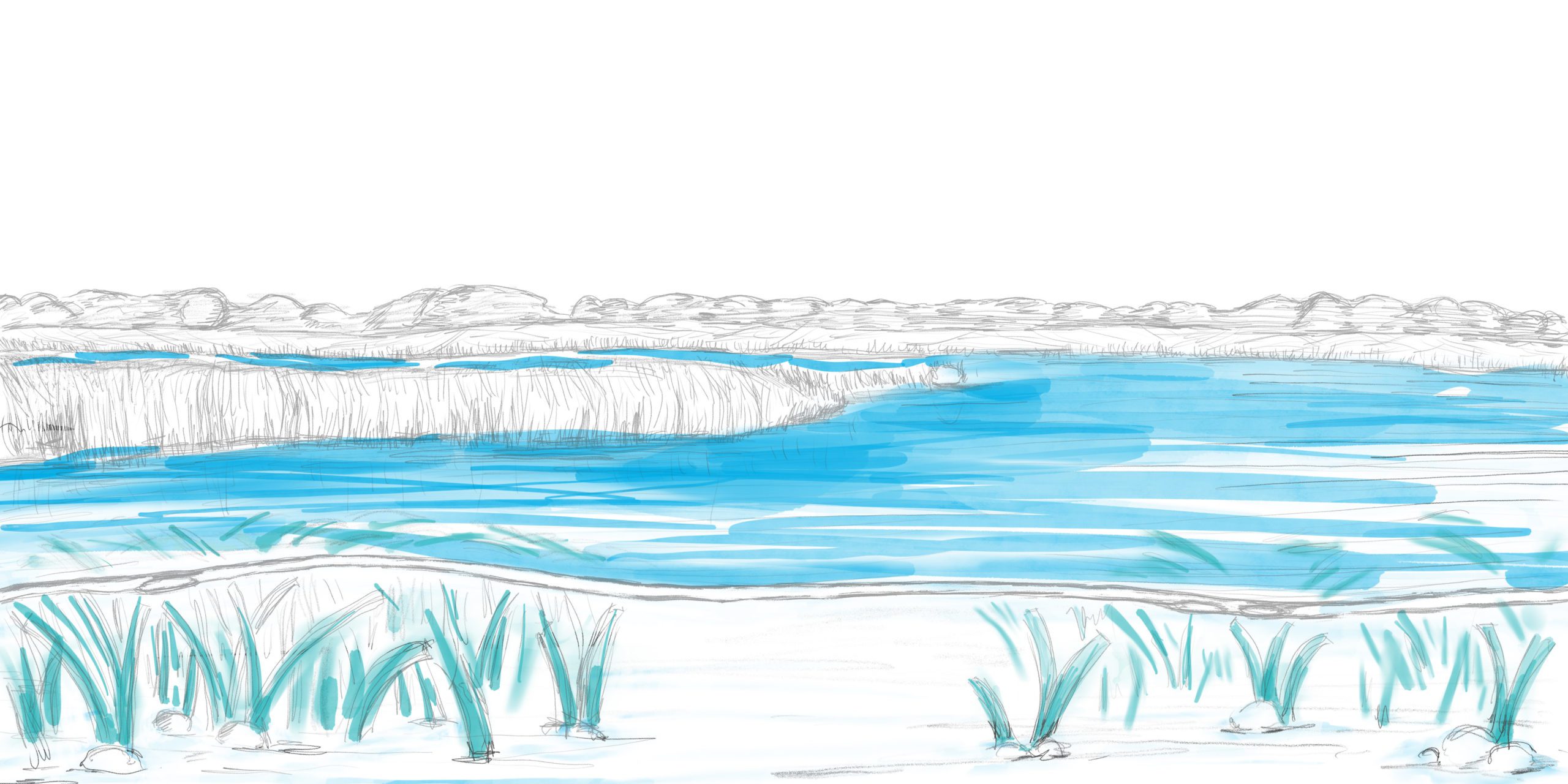
The teetering balance of coastal CO2
WHOI scientists Matt Long and Aleck Wang explain the incredibly important role of coastal seagrasses and rivers in the global carbon cycle
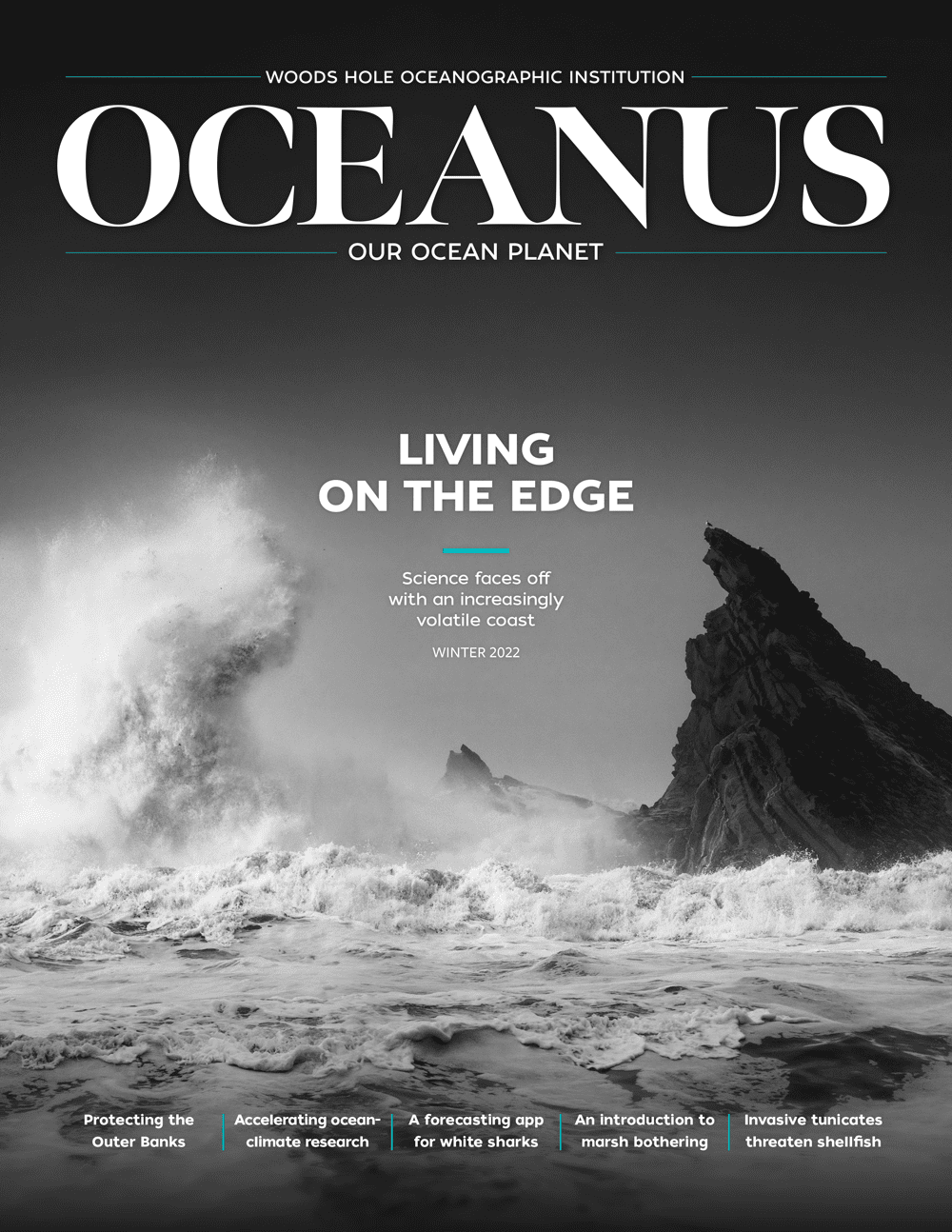 This article printed in Oceanus Winter 2022
This article printed in Oceanus Winter 2022
Estimated reading time: 3 minutes

The underappreciated power and plight of seagrasses
Matthew Long
Associate scientist, Marine Chemistry & Geochemistry
Seagrass meadows are incredibly useful coastal ecosystems that range from the tropics all the way to the Arctic. Like the grass in your front yard, they’re exceptional at stabilizing sediments on the coastal seafloor as well as providing the barrier needed to blunt the impact of coastal storms. For juvenile fish species, they form a protective canopy that can serve as a refuge and food source. Most importantly, seagrasses help trap organic particles and sediments (even plastics) making a kind of soil that serves as a vital carbon storage system.
My team measures the concentration of carbon in and around these plants, to determine where it’s going in the marine environment—something we call a flux or rate. These rates are really important in global modeling efforts, which project carbon levels and their effect on climate.
Unfortunately, seagrass meadow decline is on the same order as tropical rainforests, wetlands, and coral reefs. Today, urban development and construction has killed more than 30 percent of the world’s seagrasses. This includes development projects like building new harbors or putting boat docks in, where churned up silt can muddy the water and limit sunlight. Seagrasses are also threatened by coastal nutrient pollution from things like septic systems and sewage outfalls. On Cape Cod, more than 85 percent of homes use septic systems that leach wastewater into the ground. That nutrient-rich water triggers algal blooms which can block out sunlight from the seafloor and prevent these plants from photosynthesizing. Currently, there’s a major push at the town level to sewer some of those houses.
My lab is actively doing research to find ways to overcome the water quality issues and at the same time reduce the nitrogen loads that cause seagrass-smothering algal blooms. Over time, we also want to find the best places to plant new seeds to help bring populations back.
If we don’t maintain the meadows we have now, then we’re just putting more carbon back into the atmosphere and that’s not the direction we want to go in right now.


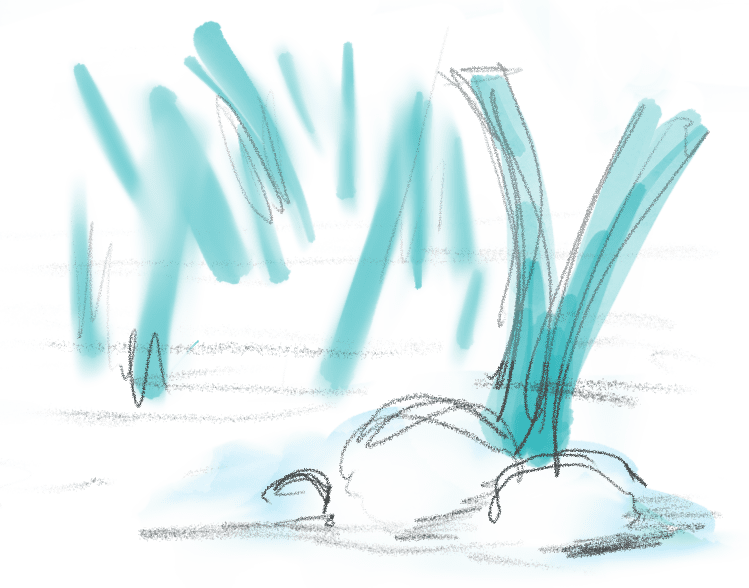
Rivers connect us—and carbon dioxide—to the sea
Zhaohui Aleck Wang
Associate scientist, Marine Chemistry & Geochemistry
In the global carbon and climate conversations, it turns out we need to be thinking more about how sediments from river outflows could be a significant source of atmospheric CO2.
My lab studies a process called precipitation, whereby sediments deposited into the ocean can react with seawater to create sinking calcium carbonate (found in seashells) and, more importantly, cause the release of carbon dioxide back into the atmosphere. Rivers are obviously a great transport system that bring these sediments from land to the coast, so we want to pay closer attention to them.
In a recent study published by my lab, we looked into the environmental effects of river sediments flowing into the ocean. We conducted our research in the Northern Gulf of Mexico, which receives two large plumes of sediment from the Mississippi and Brazos Rivers. Right now we’re trying to figure out how widely spread this process is. In the future, however, we hope to calculate if there’s excess sediment from human-caused sedimentation from upstream development projects and coastal dredging. If there is, we want to know how this could be changing chemical reactions in Gulf waters, which could result in the release of excess CO2 into the atmosphere.
If rivers carry sediments everywhere regardless of humans, this precipitation process should be happening with other natural processes that can counterbalance these carbon emissions. However, if urban development continues to deposit increasingly more sediments into our rivers, it stands to reason that humans could be increasing the amount of CO2 released into the water and atmosphere.
We’re still learning about the precipitation process—not only from rivers, but also from other sediment sources, such as dust from coastal deserts, or marine sediment kicked up from activities like coastal dredging. If this process happens on the scale that we think it does, then this could be an additional source of atmospheric CO2 that we need to account for in global climate models.
